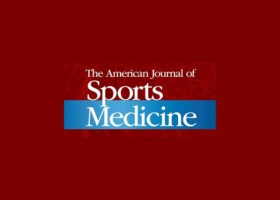
Authors:
Ernat JJ, Rakowski DR, Johnson DW, Casp A, Ruzbarsky JJ, Peebles A, Hanson JA, Horan MP, Katthagen JC, Provencher MT, Millett PJ
Abstract:
Background:
The pathoanatomy of glenoid labral articular disruption (GLAD) lesions has been inconsistently and poorly defined in the literature.
Purpose/hypothesis:
The purpose was to characterize GLAD lesions as they pertain to the pathoanatomy of labrum, cartilage, and bony structures, and to correlate findings with patient-reported outcomes (PROs). We hypothesized that greater degrees of bony and cartilaginous involvement would correlate with worse outcomes.
Study design:
Case series; Level of evidence, 4.
Methods:
All patients with a diagnosis of a GLAD lesion or a reverse GLAD (RGLAD) lesion at the time of diagnostic arthroscopy (January 2006-February 2019) were included in this study. Patients with ≥13.5% bone loss or previous ipsilateral shoulder surgery were excluded. Patient charts and operative reports/photos were used to identify the location of injury, extent of injury (labral, chondral, and bony), associated injuries, demographic factors, and treatment performed. Three injury patterns were identified: small (type 1), with no chondral defect after labral repair; large (type 2), with residual chondral defect after labral repair; and bony (type 3), with associated glenoid bone loss amenable to labral repair. Characterizations were cross-referenced to PROs at a mean follow-up of 5.5 years (range, 2.6-10.5 years): American Shoulder and Elbow Surgeons (ASES), Single Assessment Numeric Evaluation, shortened version of Disabilities of the Arm, Shoulder and Hand, and patient satisfaction.
Results:
In total, 50 patients were included, with 40 having GLAD and 10 having RGLAD lesions (mean age, 34.7 and 33.2 years, respectively). There were 14 (35%) type 1, 22 (55%) type 2, and 4 (10%) type 3 GLAD injuries. All PROs improved without any differences in the 3 subgroups postoperatively (ASES, 95.1 vs 91.3 vs 98.8, type 1, 2, and 3, respectively). RGLAD injuries were majority type 2 (7/10; 70%) with the remainder being type 1 (3/10; 30%).
Conclusion:
With GLAD and RGLAD injuries, 3 distinct injury patterns can be observed correlating with the presence/absence of chondral loss after labral repair or the presence of associated bone loss. This descriptive characterization can facilitate arthroscopic treatment decisions. Future large studies are needed to determine if this is prognostic in nature.
You may request a copy of the study: Arthroscopic Characterization, Treatment and outcomes of Glenoid Labral Articular Disruption (GLAD) Lesions
